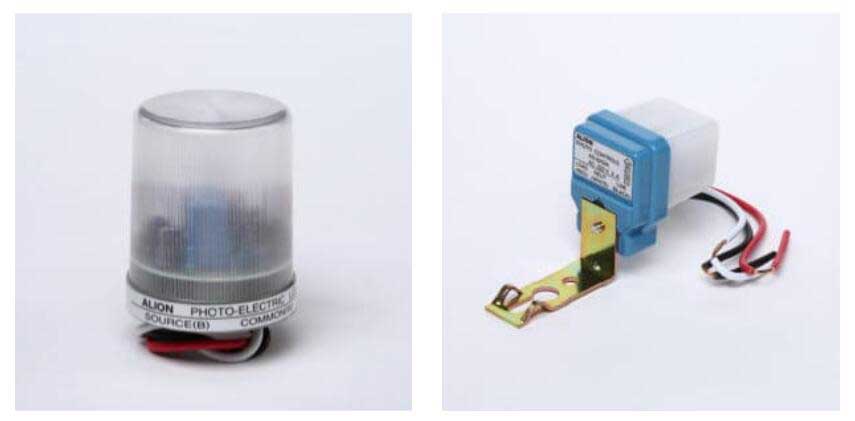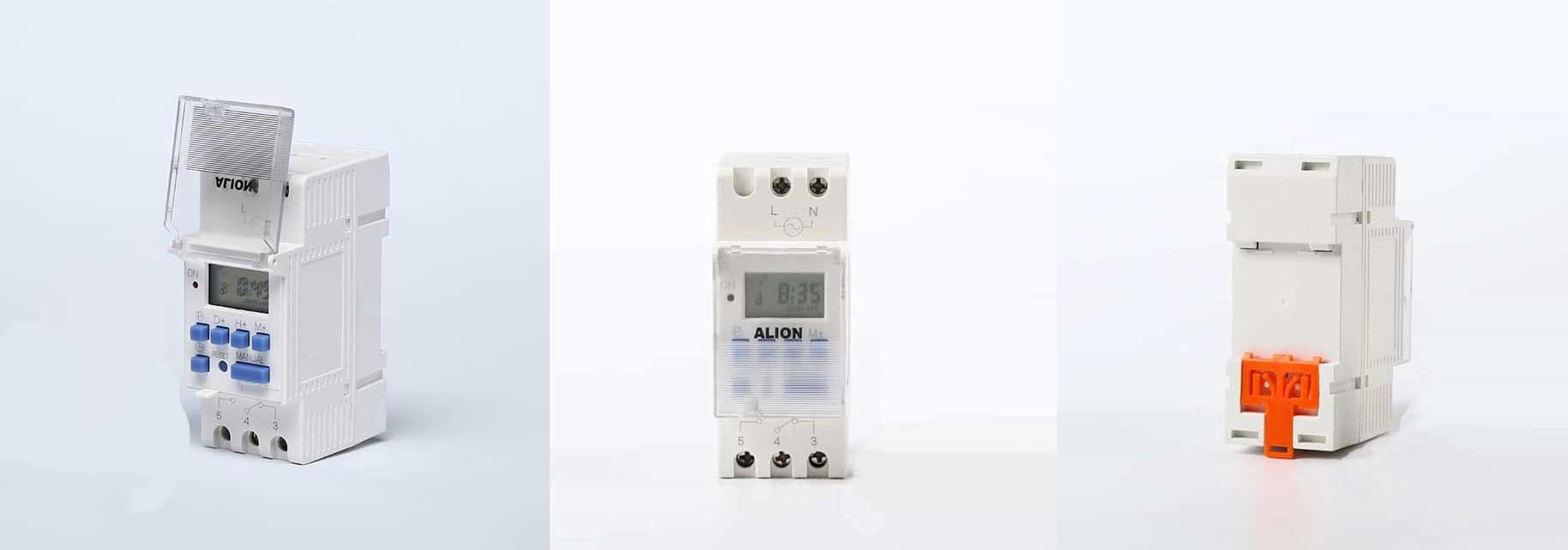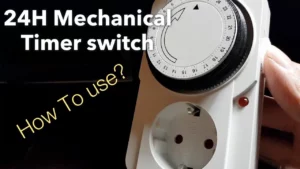With different smart home automation control systems, your outdoor lighting becomes simple, by connecting your transformer to the wall and setting up your smart home to control your lights remotely, you can do just that.
Although this futuristic technology is indeed spectacular, most of us do not have smart home automation. But this does not mean that we must live in the Stone Age! We have a variety of different transformer controls.
With a variety of different transformer control systems, there must be a control system that suits your specific needs and budget. How do you control the lighting in your outdoor space? It really depends on what your needs are and what you want your controller to do for you.
There are two types of transformers: one is a transformer with integrated controller that cannot be replaced; the other is a transformer with space inside for plugging and unplugging. We will look at some controllers for transformers. Their controllers can be replaced and equipped in different ways.

In this blog, we will introduce some different control systems. Some control systems are fairly basic, others can be more complicated. When we look at some of these control systems, we will do our best to illustrate some of the advantages and disadvantages of each system.
1. Analog timer Switch
The analog timer switch is just a mechanical timer. You know the old-fashioned timer used to turn on and off the lights in the house at night to make it look like someone is there. These timers are very straightforward. The mechanical gear in the timer rotates to make the external clock face of the timer rotate. The labels along the periphery of the clock can be set to specified opening and closing times.
Although these timers are relatively easy to set up, they also have some disadvantages. For example, if there is a power outage, your timer will be offset, no matter how many hours the power outage is. This means that if you lose power for two hours, the timer will deviate from the same time before it starts. You will need to reset it. These timers also need to be adjusted according to daylight saving time. They may also need to be adjusted according to the time of the year when the sunsets.

Advantage
- Affordable
- Can be easily set.
Disadvantage
- Whenever there is a power failure, this timer needs to be reset.
- Over time, mechanical failure may occur.
- No adjustment due to sunset
- It will not be adjusted according to daylight saving time.
2. Digital Timer Switch
The digital timer switch is a major advancement of the analogue timer. Although they may be a bit difficult in programming, the instructions are usually very straightforward. With most digital timers, you’ll be able to do more than one on/off the program on different days of the week. For example, you can set your lights to turn on at 6 pm and turn off at midnight. Then you can set up another program to turn them on again at 6 in the morning and turn them off at 8 in the morning to provide lighting for your early morning. In addition, you can also make your weekday program close at a different time from the weekend program.
With a digital timer, you have more control over the light switch. Another feature of digital timers is their built-in memory. A good digital timer will have an internal battery in case of a power failure. If there is a power failure, your timer will save its program and continue to run after the power is restored.

The timer batteries need to be replaced every two years or so because they have worn out. This timer may or may not need to be manually set to daylight saving time, depending on different models. The timer is limited to the specified on/off time and cannot be adjusted for sunset.
Advantage
- Affordability
- Ability to set various on/off programs.
- Built-in battery, with internal memory in case of power failure.
- It can be adjusted automatically according to daylight saving time.
Disadvantage
- The battery needs to be replaced every few years.
- Some models are not adjusted for daylight saving time
- Do not adjust for sunset.
3. Photocell Switch
The photocell swicth is a light sensor. It senses the sunlight to determine when the lights should be turned on and off. Although photovoltaic cells come in different shapes and sizes, they operate in the same way: they perceive the darkening of the sky outside, and once the sky darkens, turn on your system.
Photocells are a good way to ensure that your lights are turned on at sunset. However, one disadvantage of photocells is that they will not turn off until they sense light again at sunrise. Another problem maybe the location of the transformer. The photocell is connected to the outside of the transformer. If the transformer is in a dark place, in a garage, or other places where light is restricted, the photocell will not know when to turn off. There are some ways to solve this problem, but they often need to create something customized.

Advantage
- Affordable
- It can ensure that your lights can adapt to sunset and sunrise throughout the year.
- If you want your lights to always be on between sunrise and sunset, that’s great.
- Very reliable
Disadvantage:
- It cannot be used effectively for transformers located in dark or heavily shaded areas.
- Will not close at the specified time.
4. Control Combination
Photocells are great for ensuring that your lights are adjusted according to sunset conditions throughout the year and turned on when it is dark. The biggest problem with them is that they will not close at a specific or designated time. Analog and digital timers allow you to control the light on and off.
One way is to combine the two to get the best effect (adjustment and control) of the two worlds. Combining a photocell with a timer can make your lights turn on at sunset and turn off when you want.
For example, you use a digital timer and your photocell. Considering that the sun sets very early in winter, you set the timer to turn on at 5 pm and turn off at midnight. The photovoltaic cell will turn on when the sun goes down and turn off when you wish.
By using the photocell with your timer, you can have more control over the operation of the system. The photocell turns on the lights, and the timer turns them off.
Advantage
- Affordable
- Your light will turn on at sunset and turn off at any designated time you like.
- You can trust your lighting system to run more smoothly.
Disadvantage
- You still need to reset your timers during daylight savings time, whether you use astronomical or digital timers.
- If the transformer is located in a dark or heavily shaded place, or in a place with sufficient light, it will not be effective.
5. Astronomical Timer Switch
The astronomical timer switch is a more complex control system than the aforementioned control system. Although programming may feel a bit complicated, astronomical timers are very effective.
Programming can be very simple, just enter the approximate GPS coordinates of your property location or zip code. Using this information, the astronomical timer will accurately know the time of sunrise and sunset, regardless of the time of year
As opposed to the photocell timer, the astronomical timer cannot detect outside light. With an astronomical timer, the location of your transformer is not important. Like digital timers, astronomical timers can be set to various on/off times for different days. You can make your lights turn off at midnight on weekdays and off at 2 am on weekends. The astronomical timer also has a memory with a built-in battery.

Different from the digital timer, the astronomical timer can adjust itself according to the daylight saving time. It is very accurate and does not require any adjustment after the initial setting.
Advantage
- Low price
- It can adjust itself according to sunset and daylight saving time, without the many shortcomings of digital timers and photoelectric cells that we found.
- The memory can be backed up in the event of a power failure.
Disadvantage
- Astronomical timers are usually stronger than other control devices. Some transformers may not be able to accommodate the space it needs in the transformer. If you plan your system in advance, this is actually not a problem. However, you must make sure that if you are retrofitting your old system, you can install the astronomical timer in your transformer.
- Programming may be more complicated than other control devices.
- The backup battery needs to be replaced every two years.
6. WiFi/Bluetooth Smart Control
There are many different products that provide you with the ability to equip your lighting system with smart devices that control and operate. There are several different products that provide a variety of different functions. Rather than having a thorough understanding of the specific conditions of each product, we might as well briefly introduce some of the characteristics of this type of control system.
- Can be set on/off
- You can manually turn on and off your lights with your phone.
- For some systems, this can even be done when you are not at home.
- Some systems give you the ability to dim your lighting and control different areas.
- The advanced system gives you the ability to control the color of the light.
Advantage
1If you want to fully control many aspects of your lighting system, intelligent control is very suitable for you.
Disadvantage:
- This product is not as affordable as some of the other timers we mentioned earlier.
- These systems are pretty incredible in terms of the control they provide, but keep in mind that they often have an incredible price tag. When considering these options, smart design and strategic planning can definitely save time and experience.
7. Summary
If you like to have a lot of control over your lighting system, the smart control devices may be right for you. But at the end of the day, if you just want your lights to turn on when they should be on and off when they should be off, timer switch would be a great choice.









